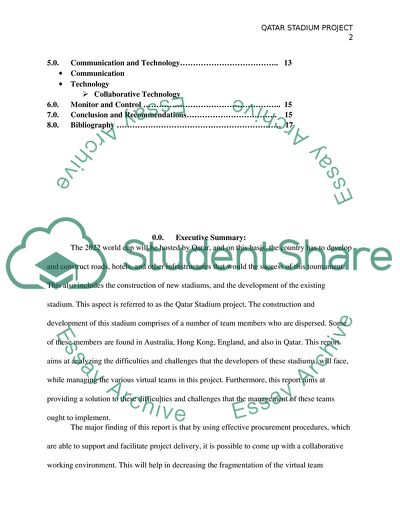Cite this document
(Integrated working: Qatar Stadium Project Case Study Example | Topics and Well Written Essays - 4000 words, n.d.)
Integrated working: Qatar Stadium Project Case Study Example | Topics and Well Written Essays - 4000 words. https://studentshare.org/engineering-and-construction/1854519-integrated-working-qatar-stadium-project-a-collaborative-management
Integrated working: Qatar Stadium Project Case Study Example | Topics and Well Written Essays - 4000 words. https://studentshare.org/engineering-and-construction/1854519-integrated-working-qatar-stadium-project-a-collaborative-management
(Integrated Working: Qatar Stadium Project Case Study Example | Topics and Well Written Essays - 4000 Words)
Integrated Working: Qatar Stadium Project Case Study Example | Topics and Well Written Essays - 4000 Words. https://studentshare.org/engineering-and-construction/1854519-integrated-working-qatar-stadium-project-a-collaborative-management.
Integrated Working: Qatar Stadium Project Case Study Example | Topics and Well Written Essays - 4000 Words. https://studentshare.org/engineering-and-construction/1854519-integrated-working-qatar-stadium-project-a-collaborative-management.
“Integrated Working: Qatar Stadium Project Case Study Example | Topics and Well Written Essays - 4000 Words”. https://studentshare.org/engineering-and-construction/1854519-integrated-working-qatar-stadium-project-a-collaborative-management.


